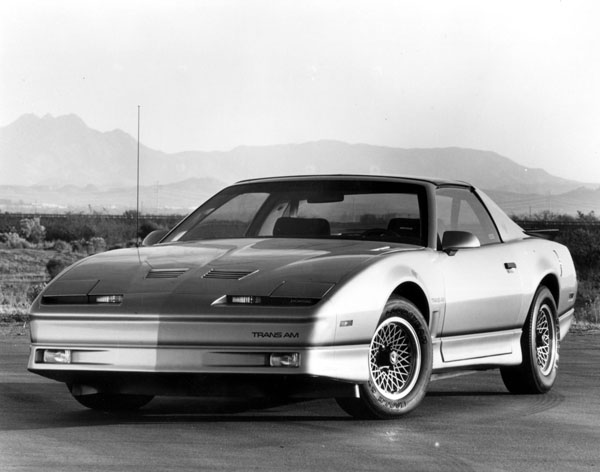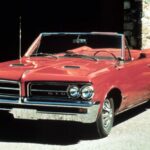Throughout the 1960s most American car manufacturers engaged in a competition to see who could make the most powerful sports car based on their standard sedans. These were commonly referred to as ‘muscle cars’ and by the end of the 1960s just as this trend appeared to be waning Pontiac released the Trans Am option for their Firebird 400. At its rather quiet release it was not immediately apparent that this car was intended to replace the two-seater Pontiac had been hoping to build instead of the Camaro F-car it was forced to adopt.
The Trans Am was designed to be an updated version of the GTO. So in muscle car tradition the Trans Am was, in fact, not a new car but an option package. When you ordered the car you specified the Ram Air engine plus front discs, variable ratio power steering and a limited slip rear end. The external option package included the Trans Am bonnet, front air dam, rear wing, air extractors for the mudguards, stiffer springs and shock absorbers and special reinforced tyres.
Because its initial marketing programme was conducted in a very low-key manner, sales were relatively slow and only 689 versions were produced. Still the Trans Am as a Firebird option remained the preferred choice for Firebird buyers in 1970. Among its engine choices the 257kW 90-degree V8 with a 6.50-litre capacity gave the best performance. The Trans Am was probably the first of the ‘muscle cars’ to have conquered the ride/handling compromise that so many of its contemporaries lacked.
It was neither harsh or bouncy which said a lot for its independent front suspension by coil springs and wishbones and semi-elliptic leaf springs at the rear. Due to the low number of optional packages sold the Trans Am was never able to race as it did not meet homologate rules. Firebirds were raced but never achieved the results that the Trans Am would have been capable of.
When the 1970s arrived Pontiac did not want a repeat of the situation forced on them in 1967 regarding the F-car clone. Pontiac insisted on being fully involved in the development of the new Firebirds so as to make them as different from Camaro as possible. Chevrolet had started work on the replacement Camaro in 1966. Pontiac started a year later, but its design was so good looking that it became the base design for the second-generation F-car for both divisions.










